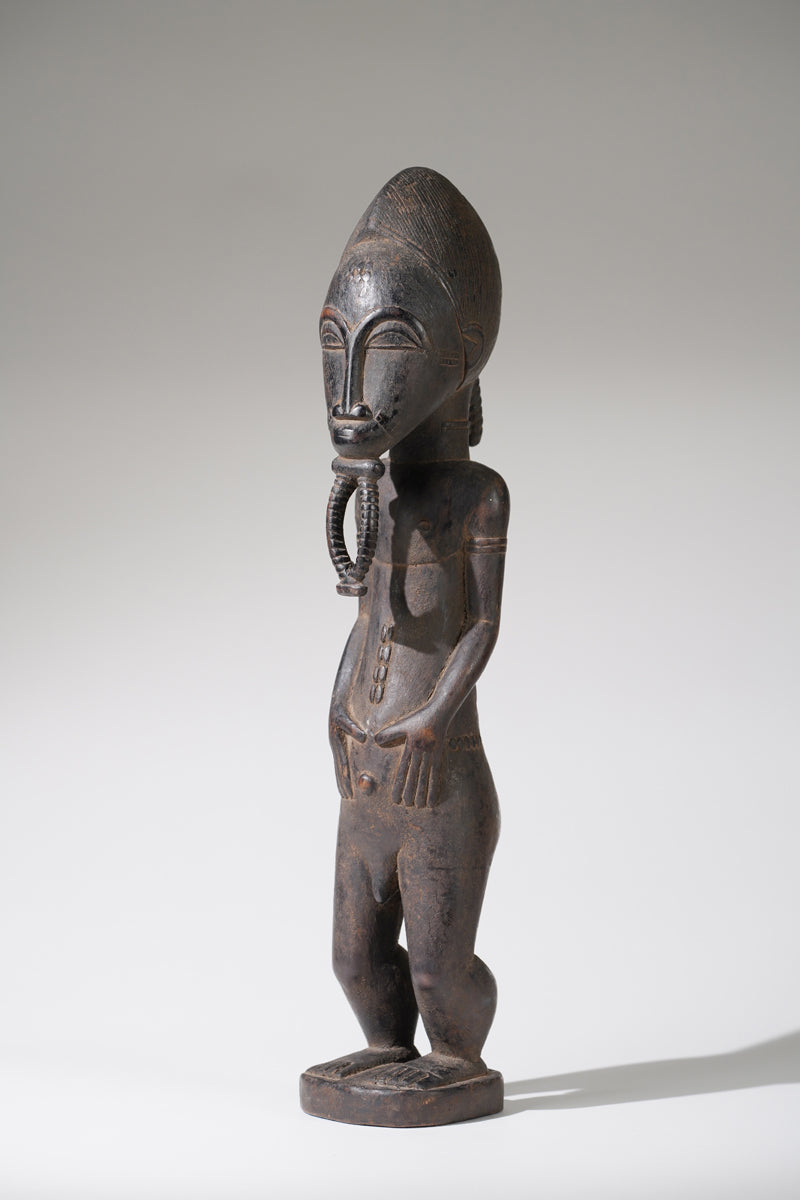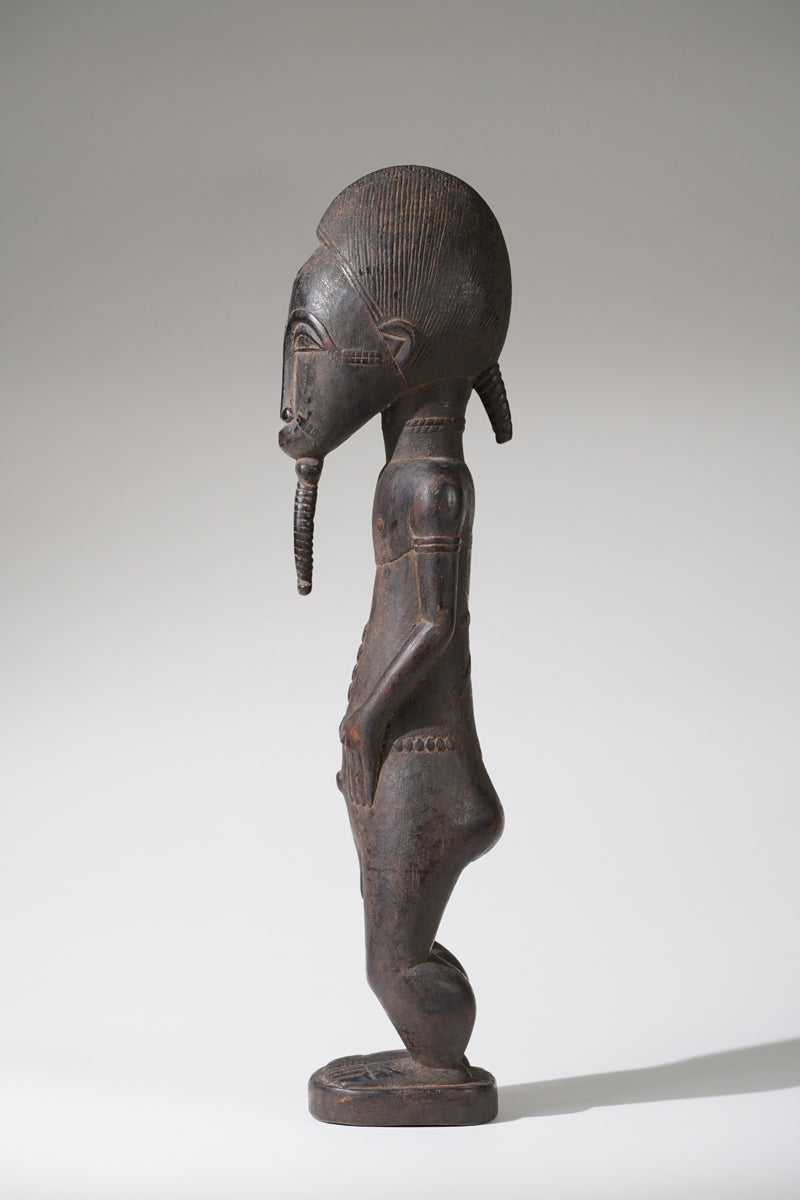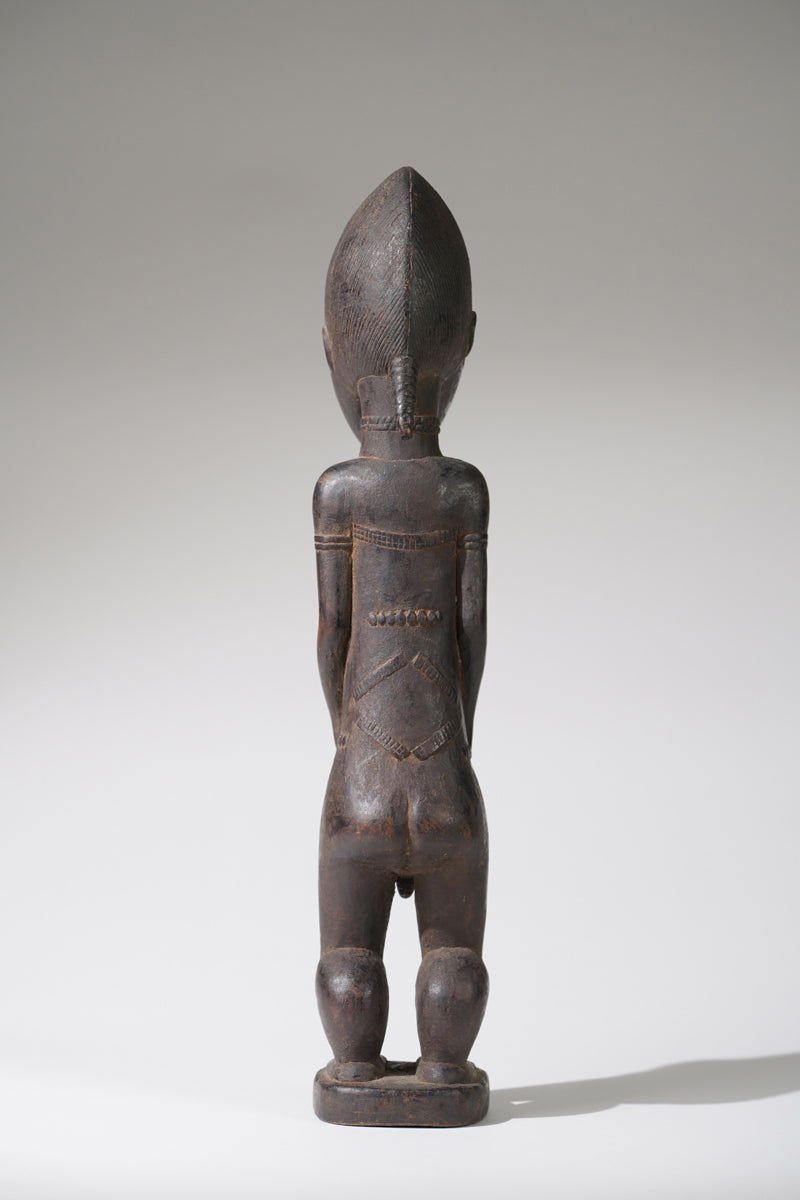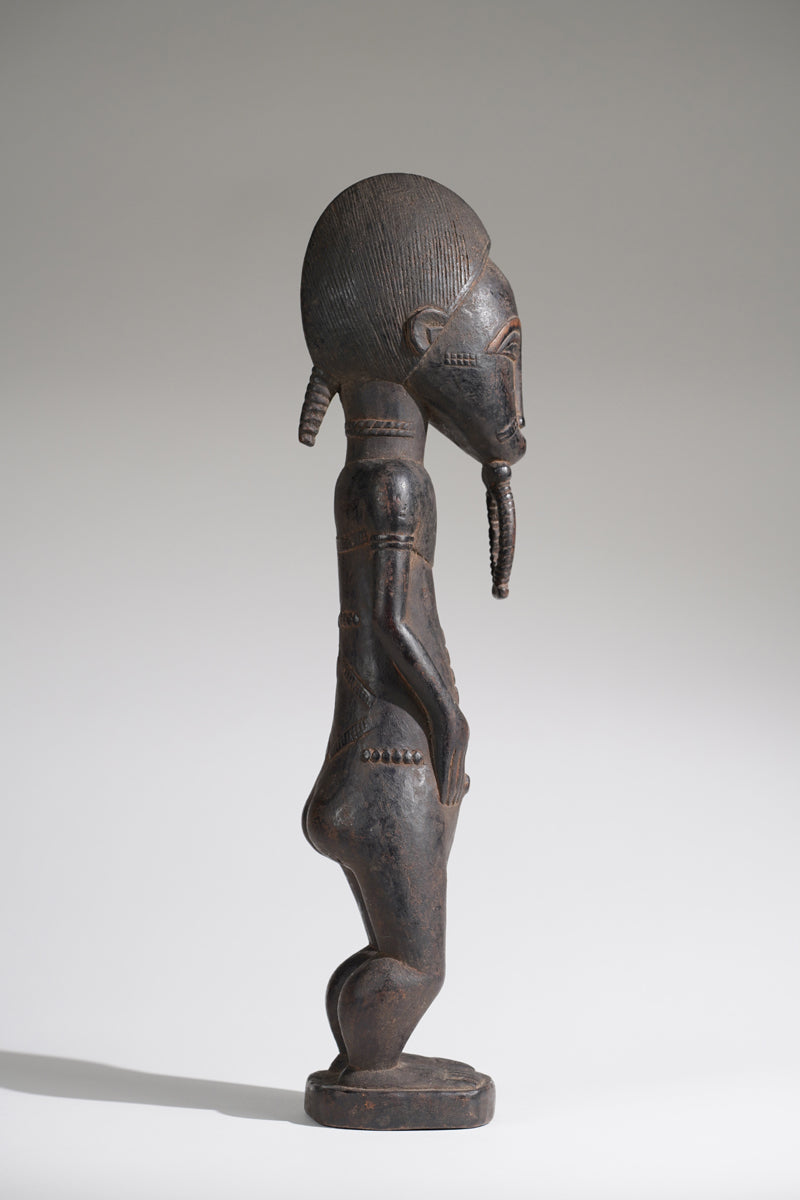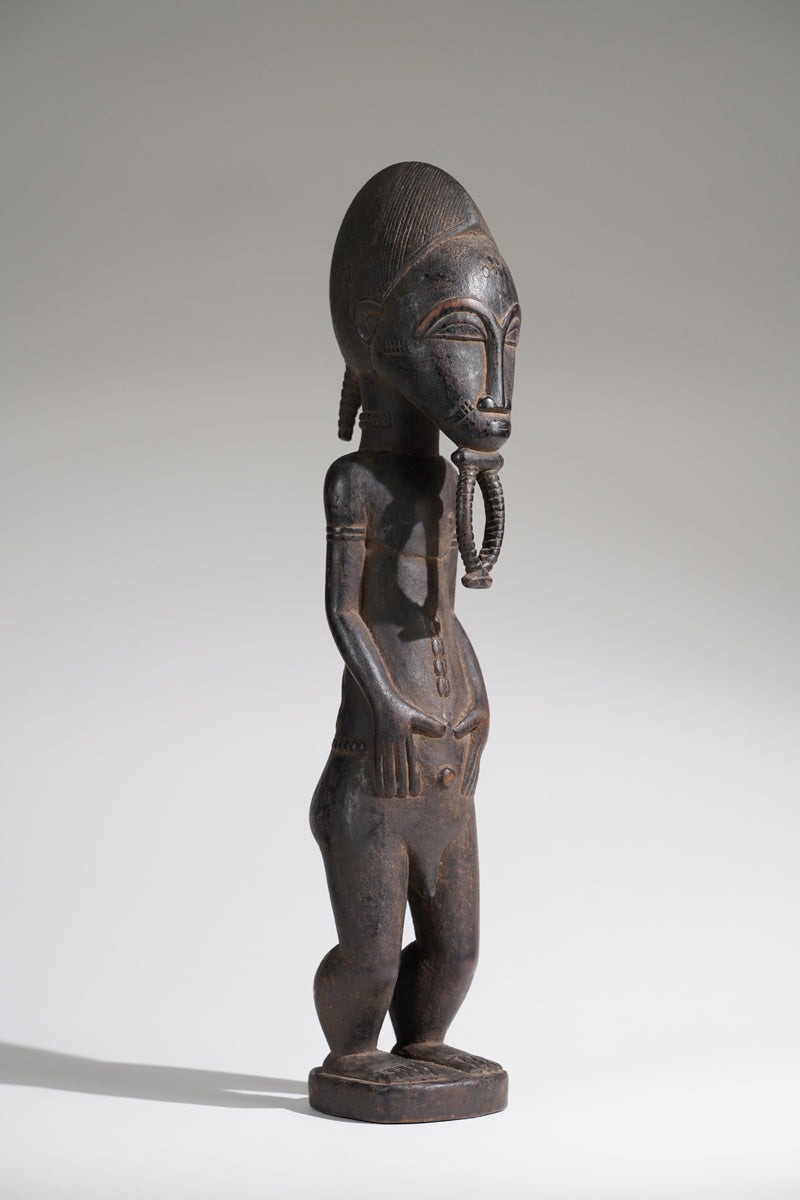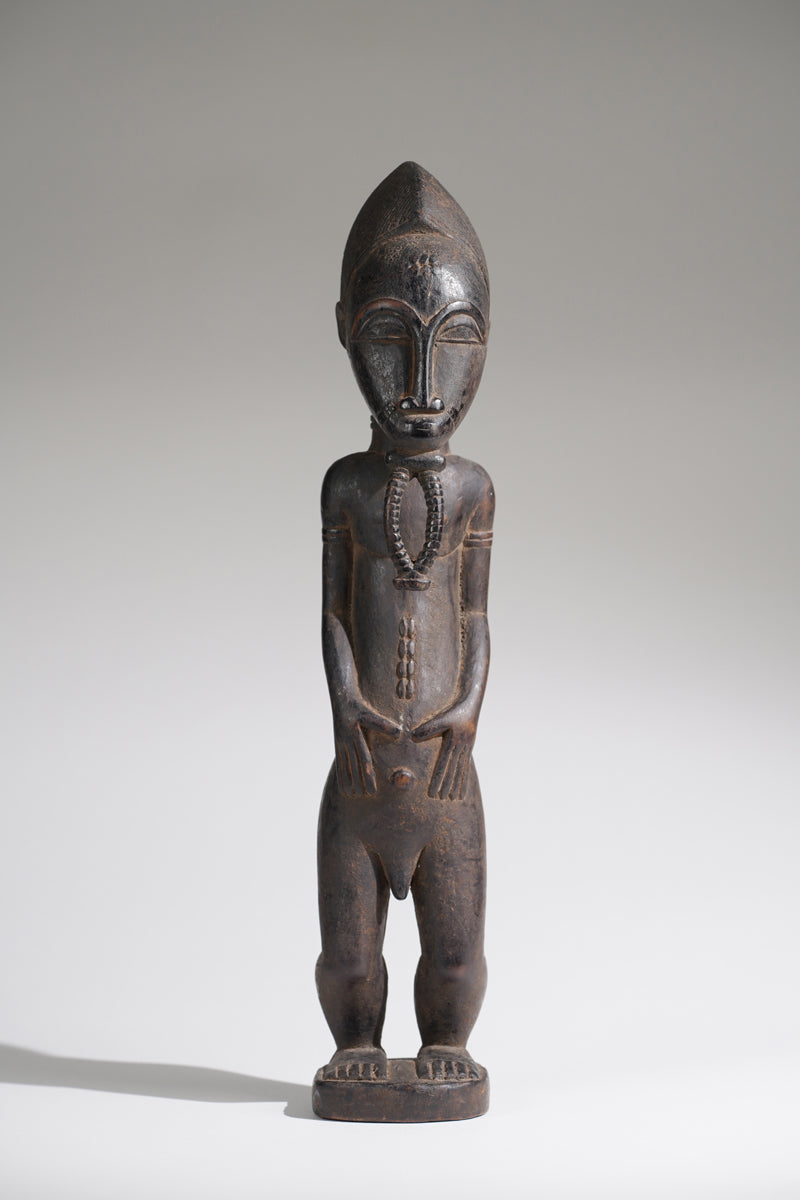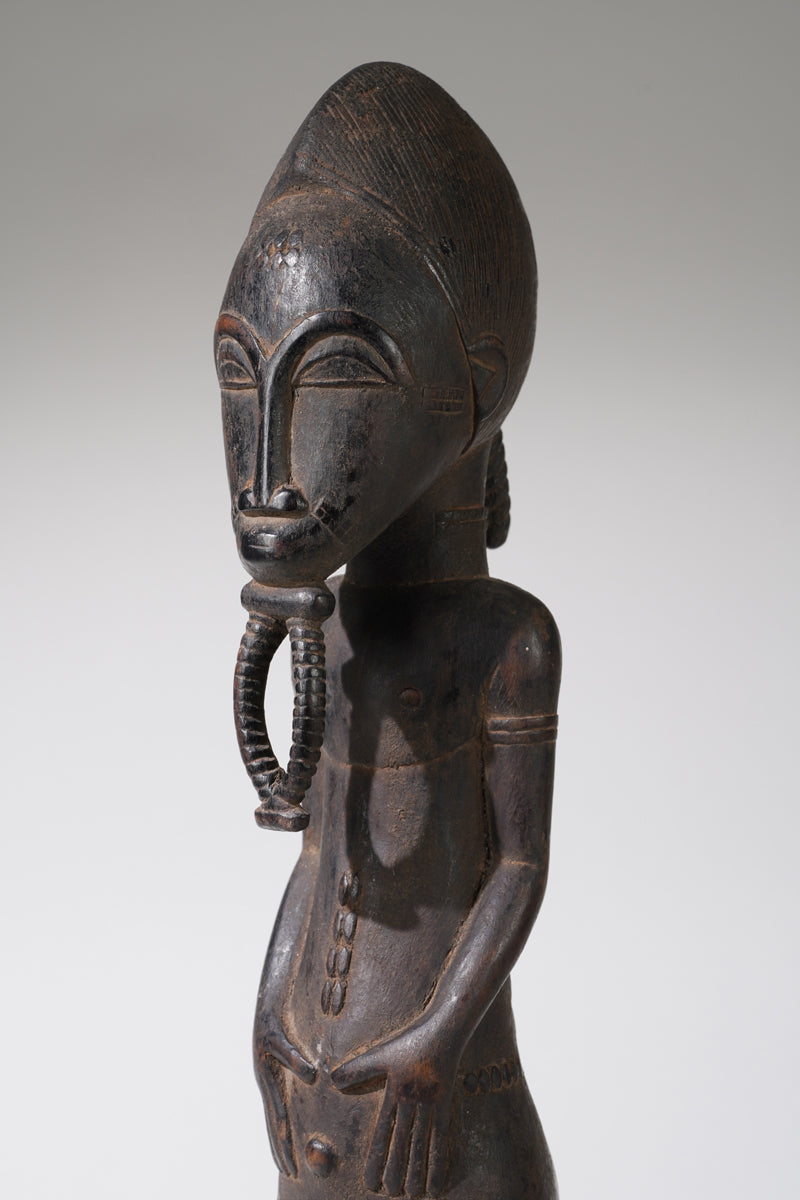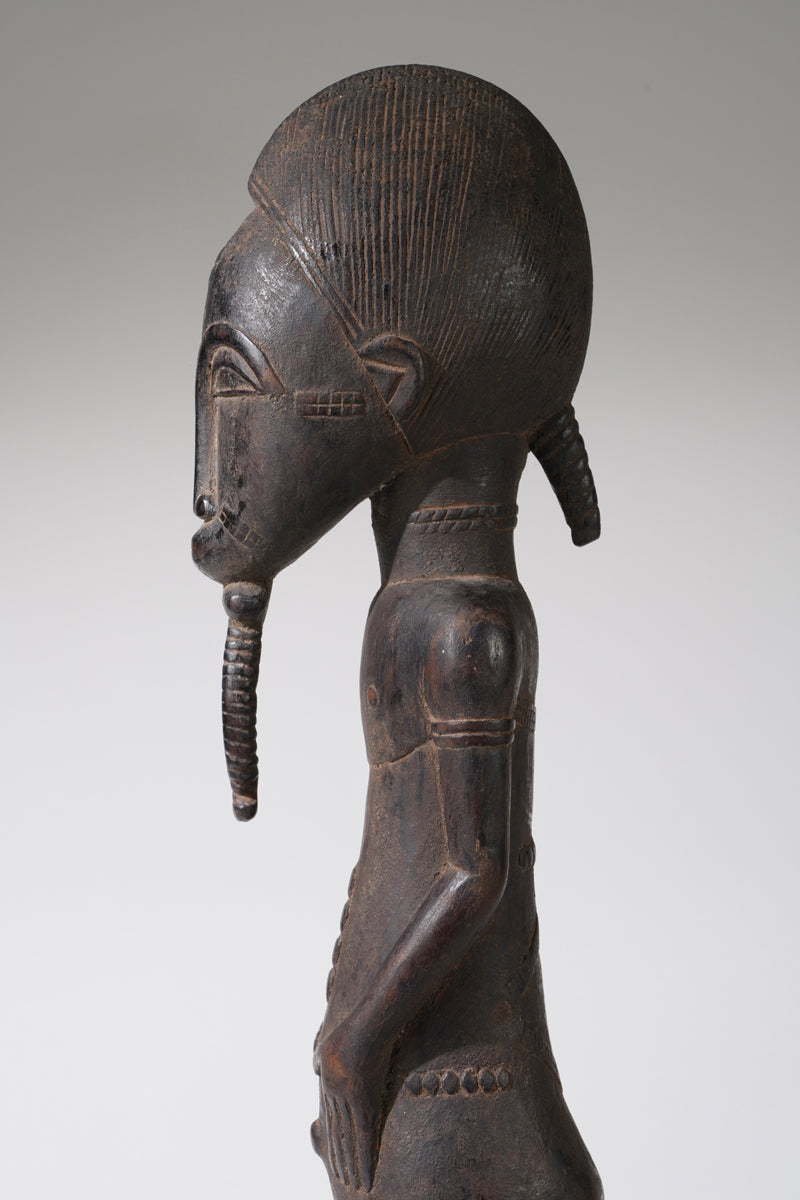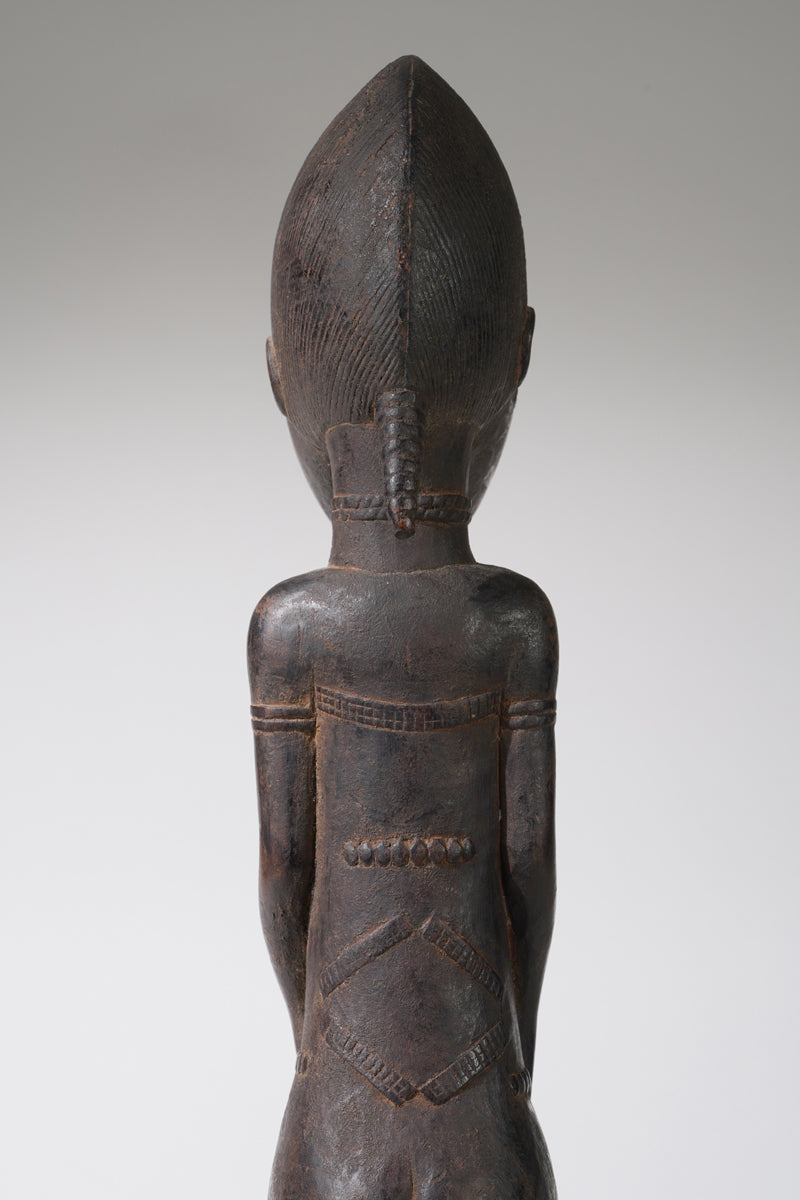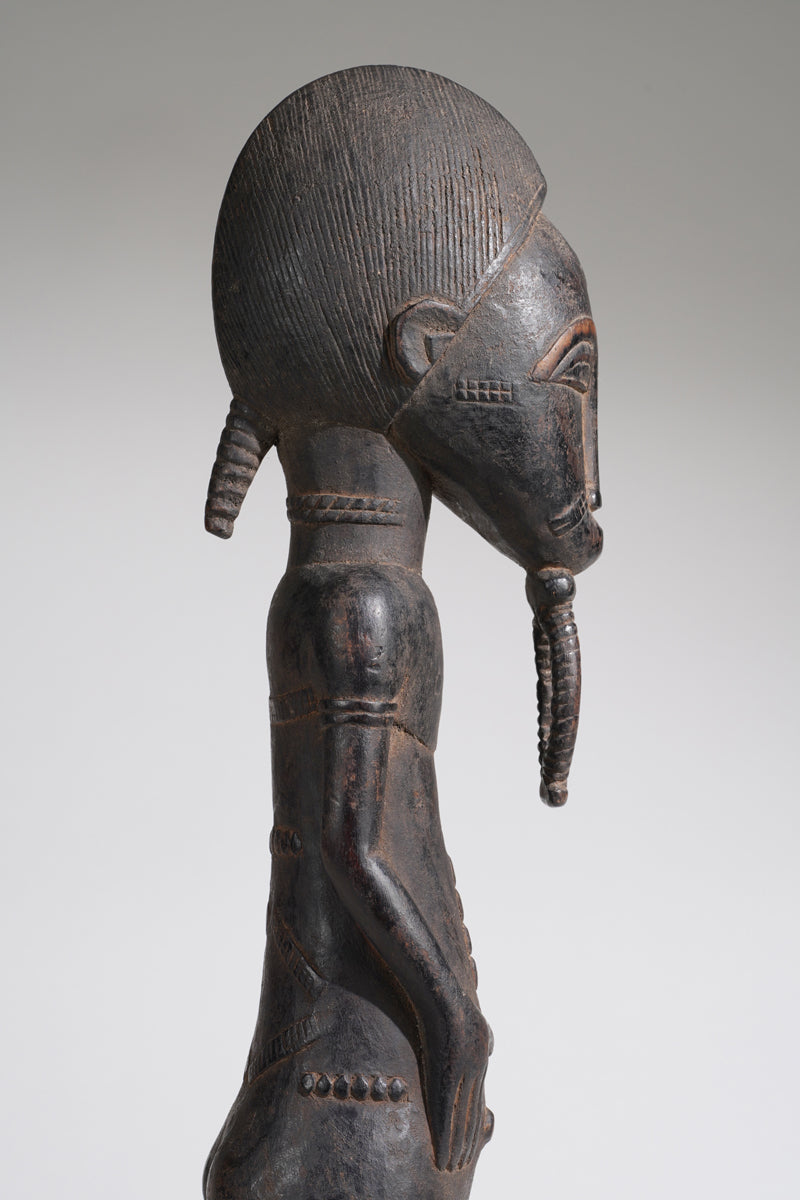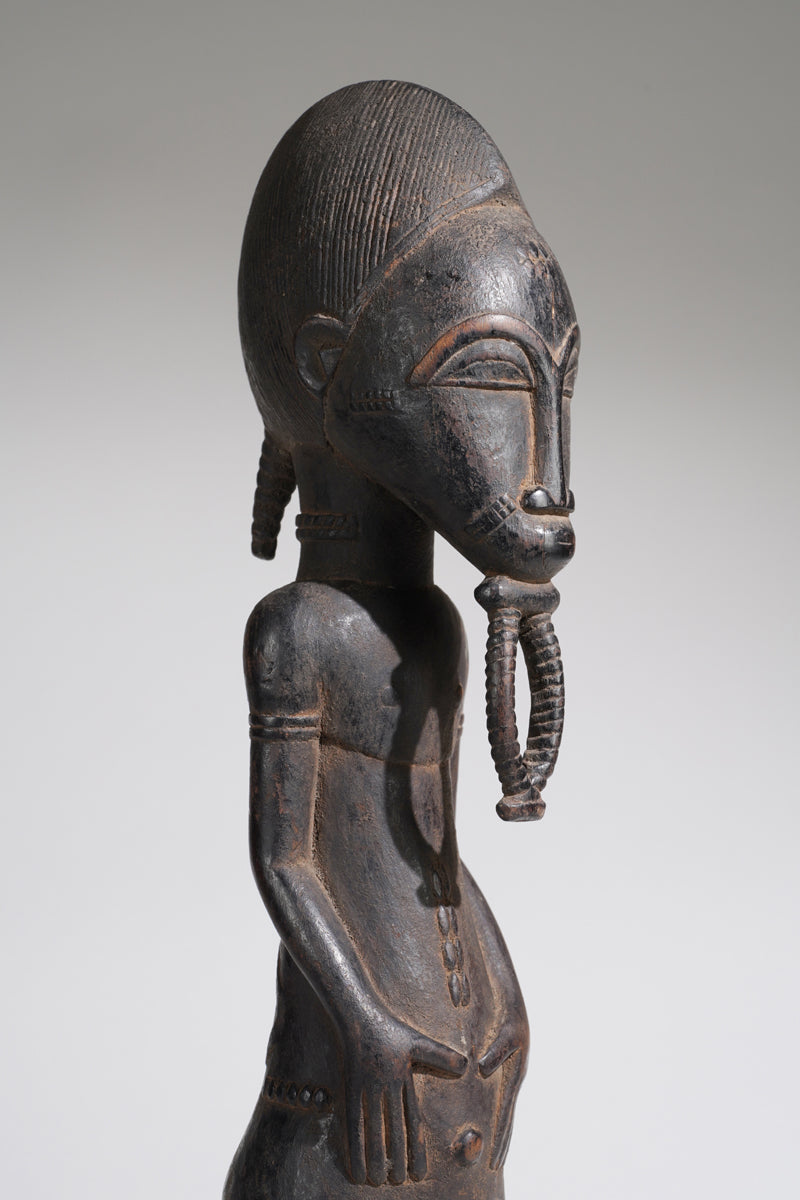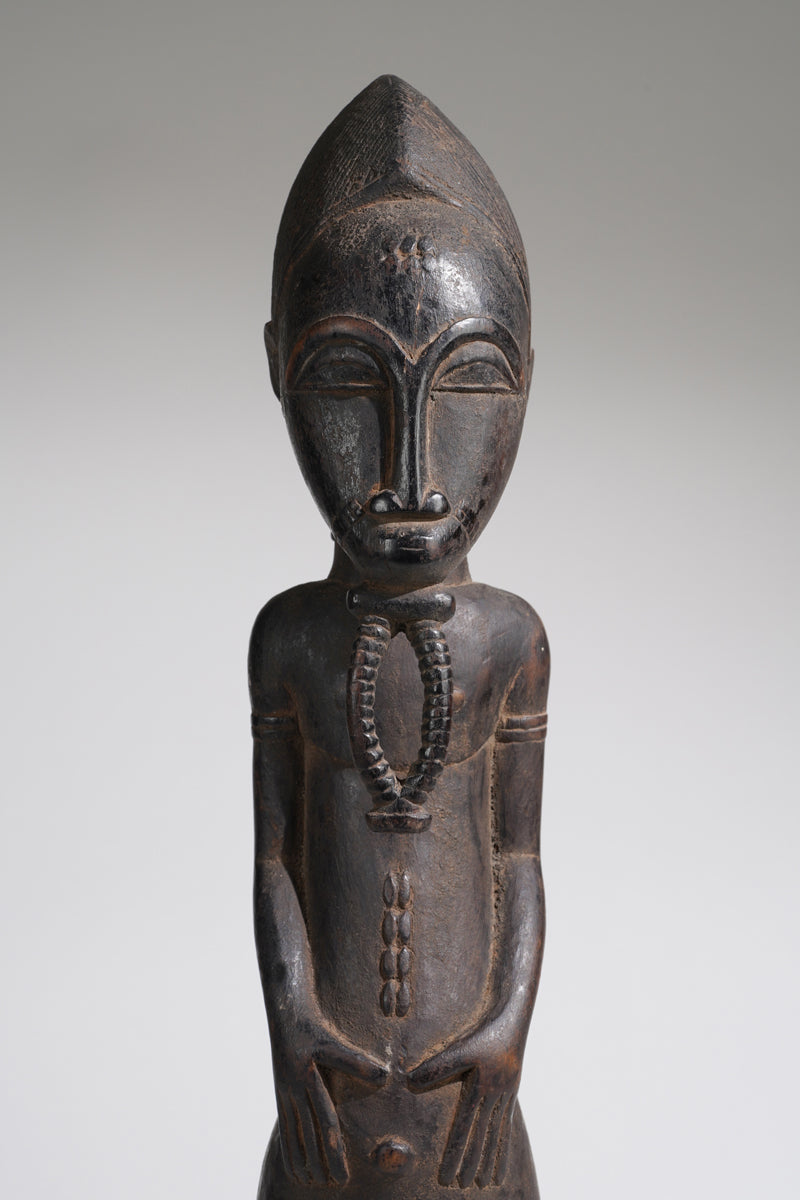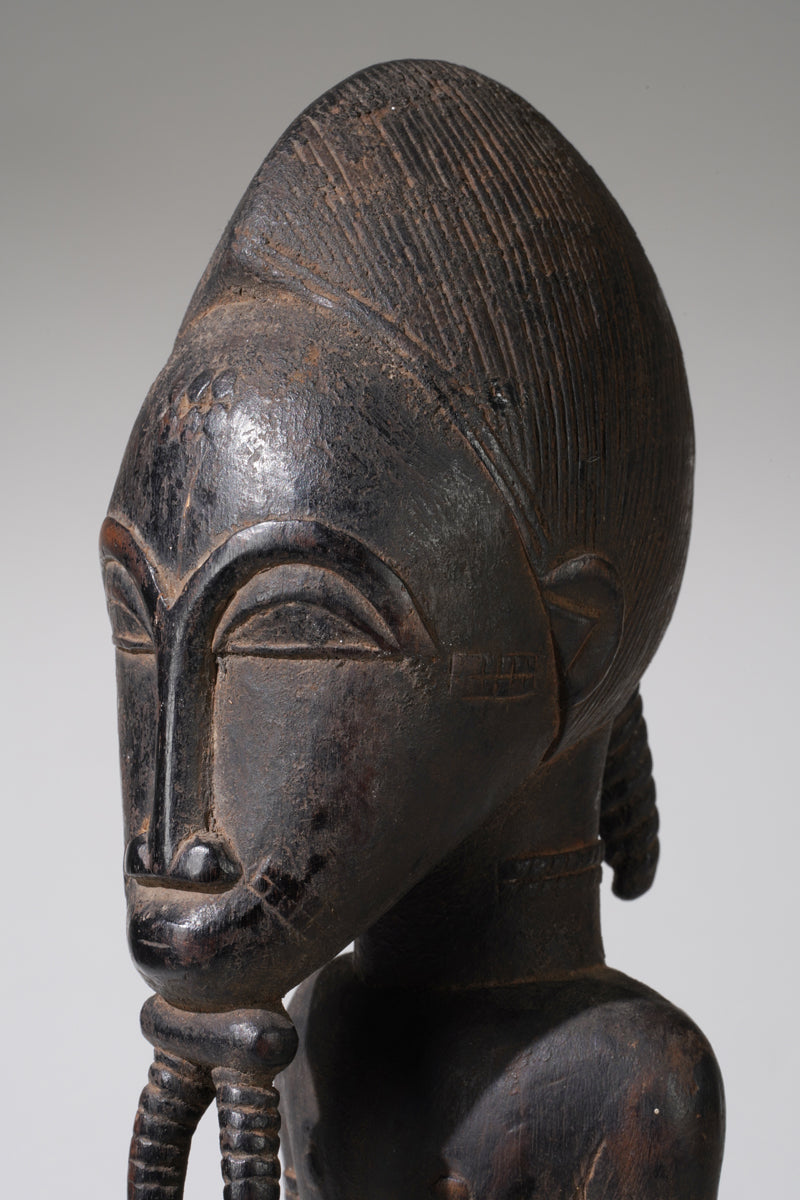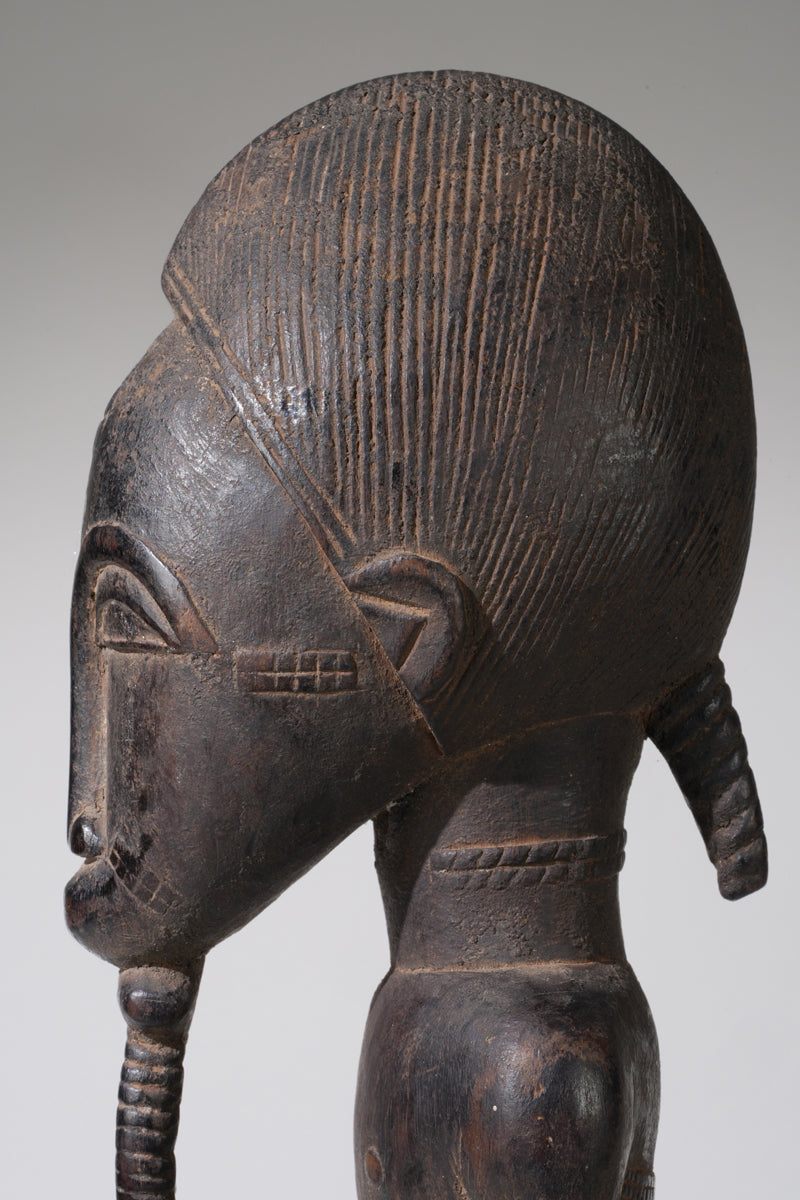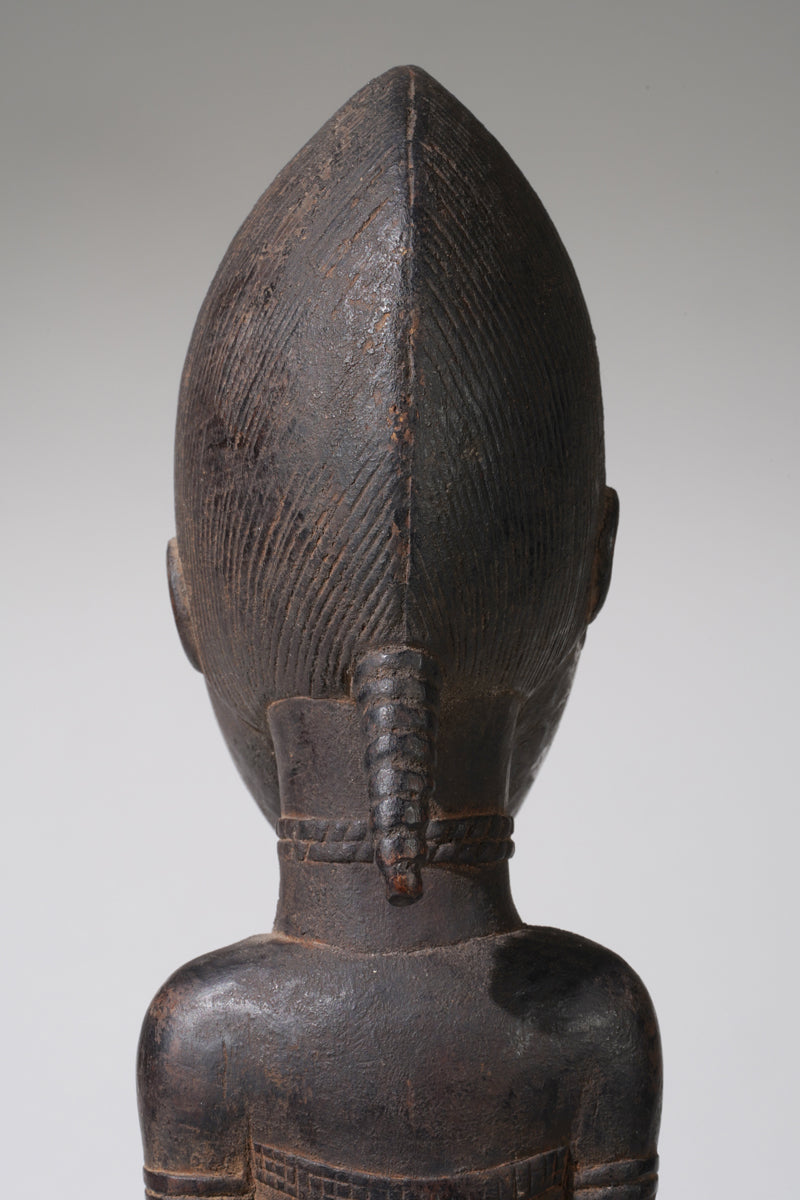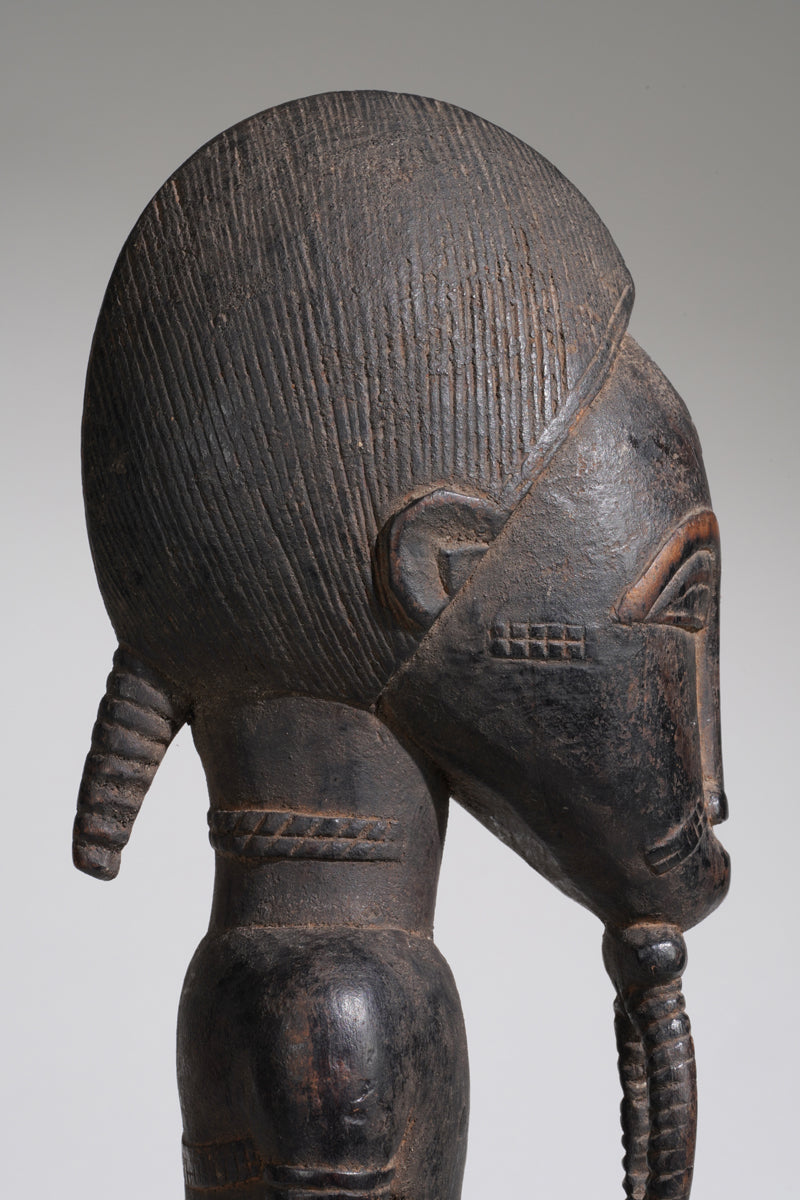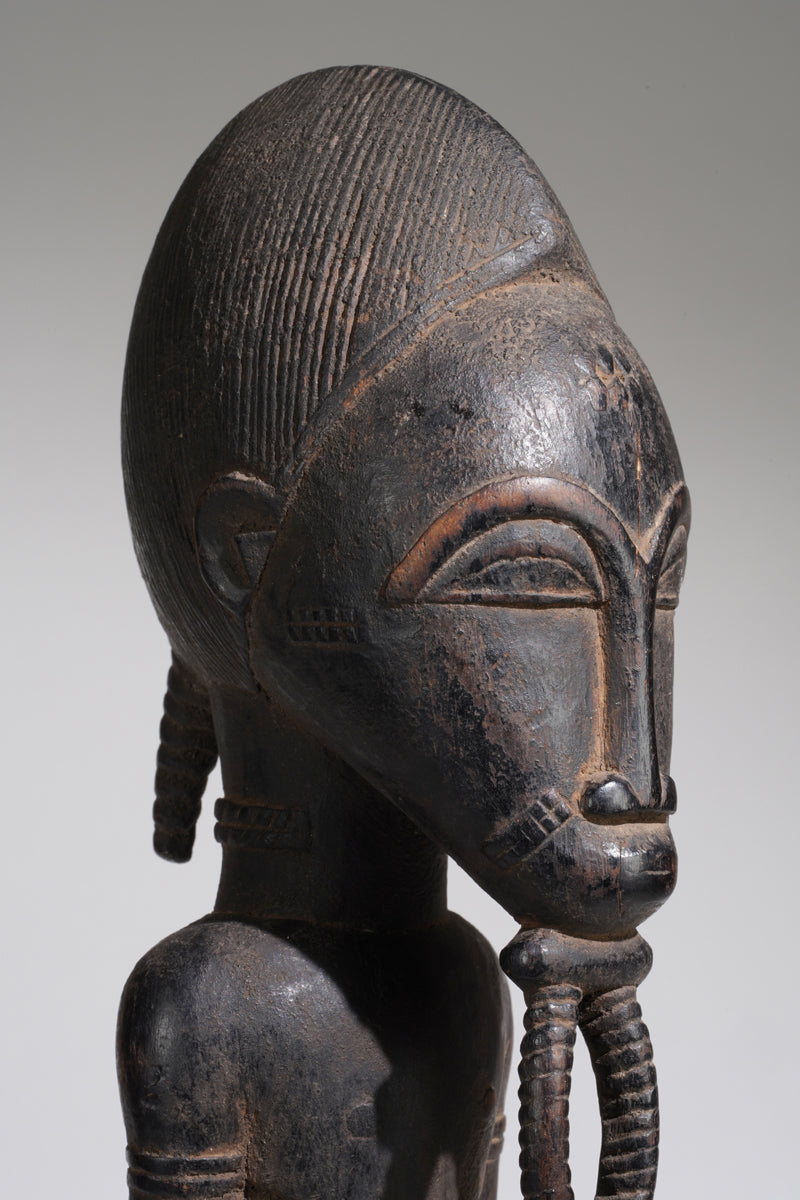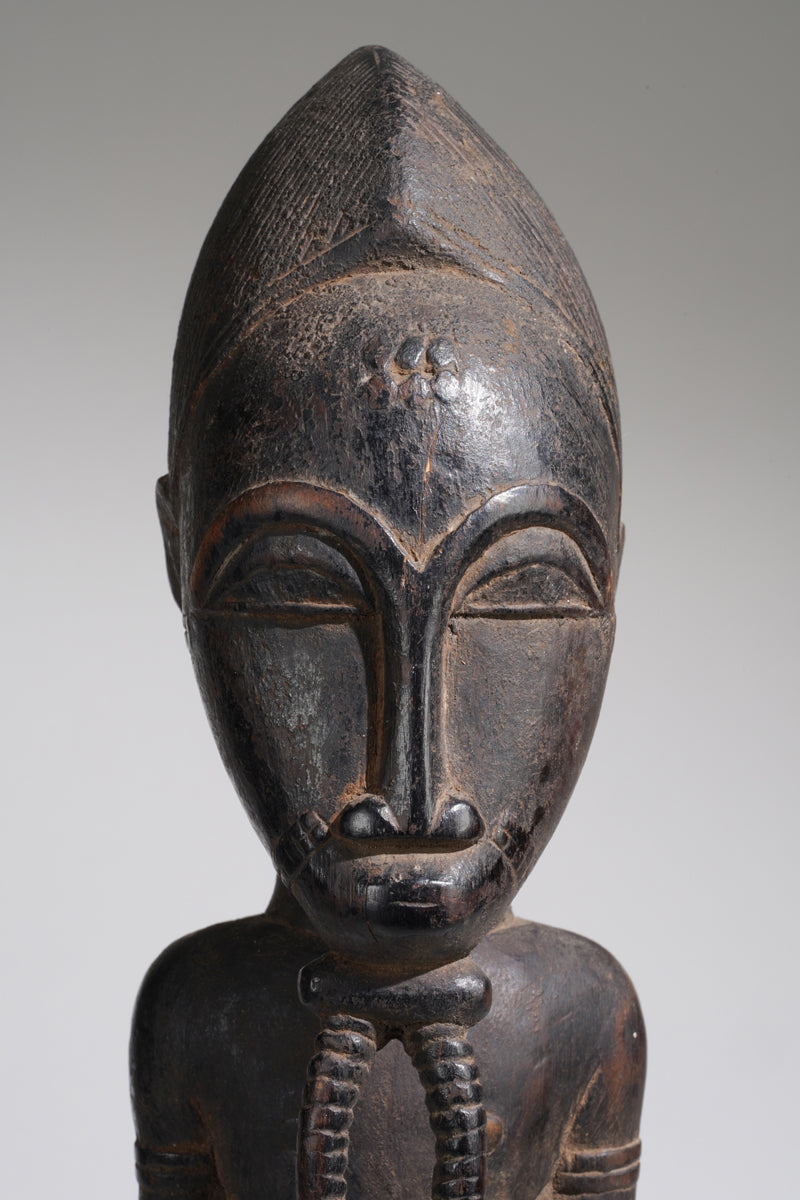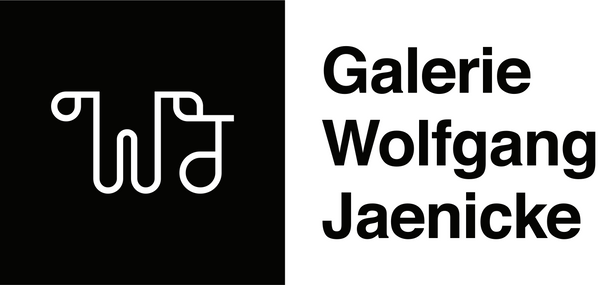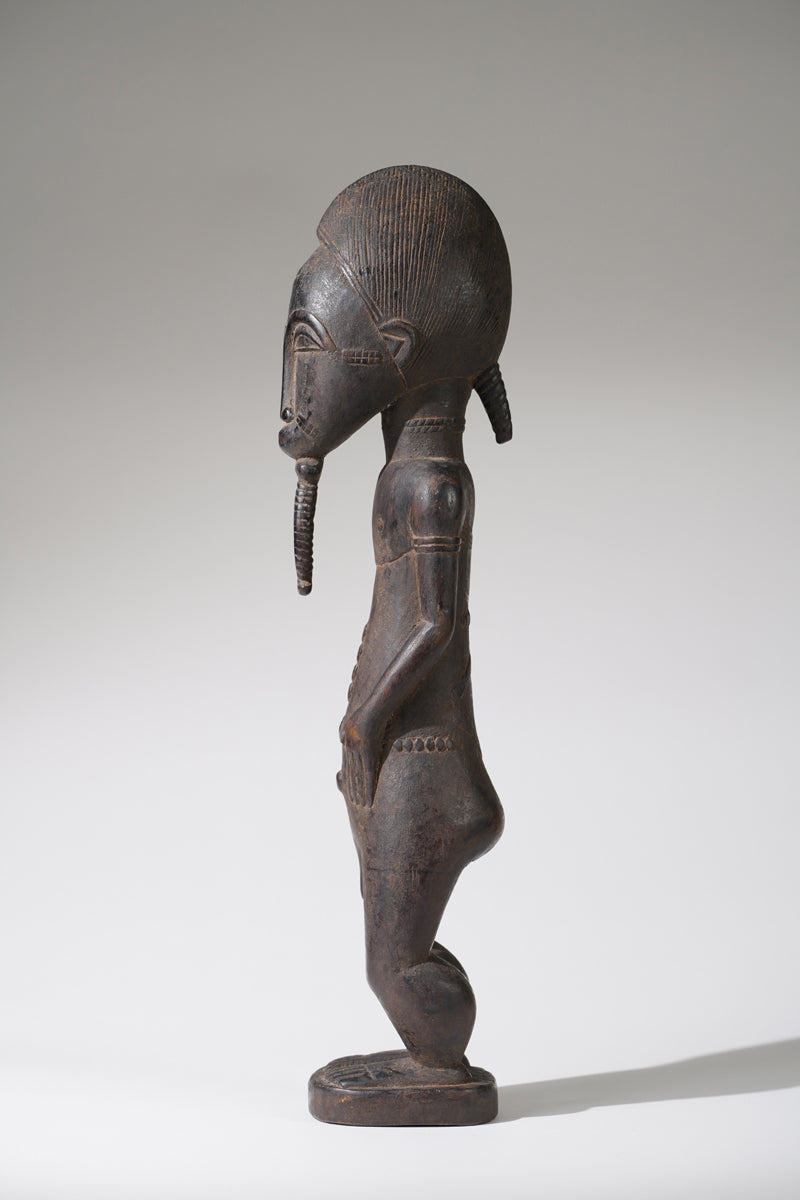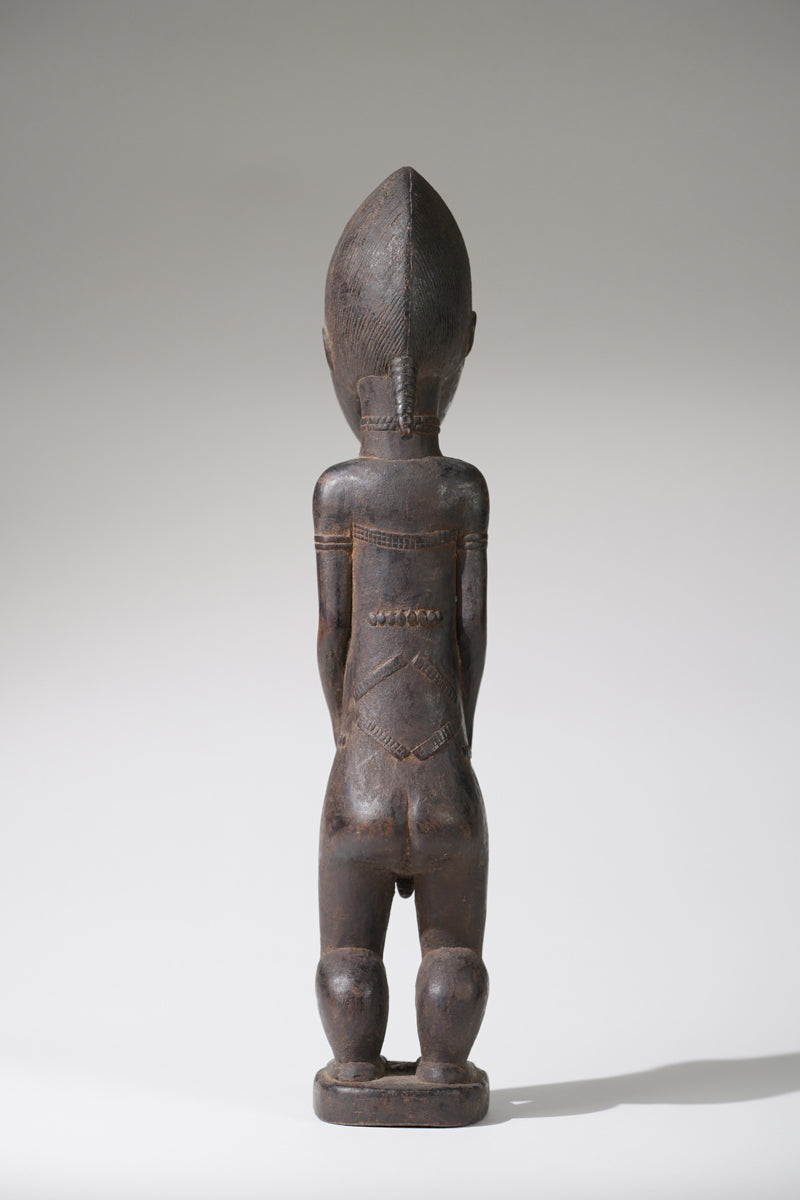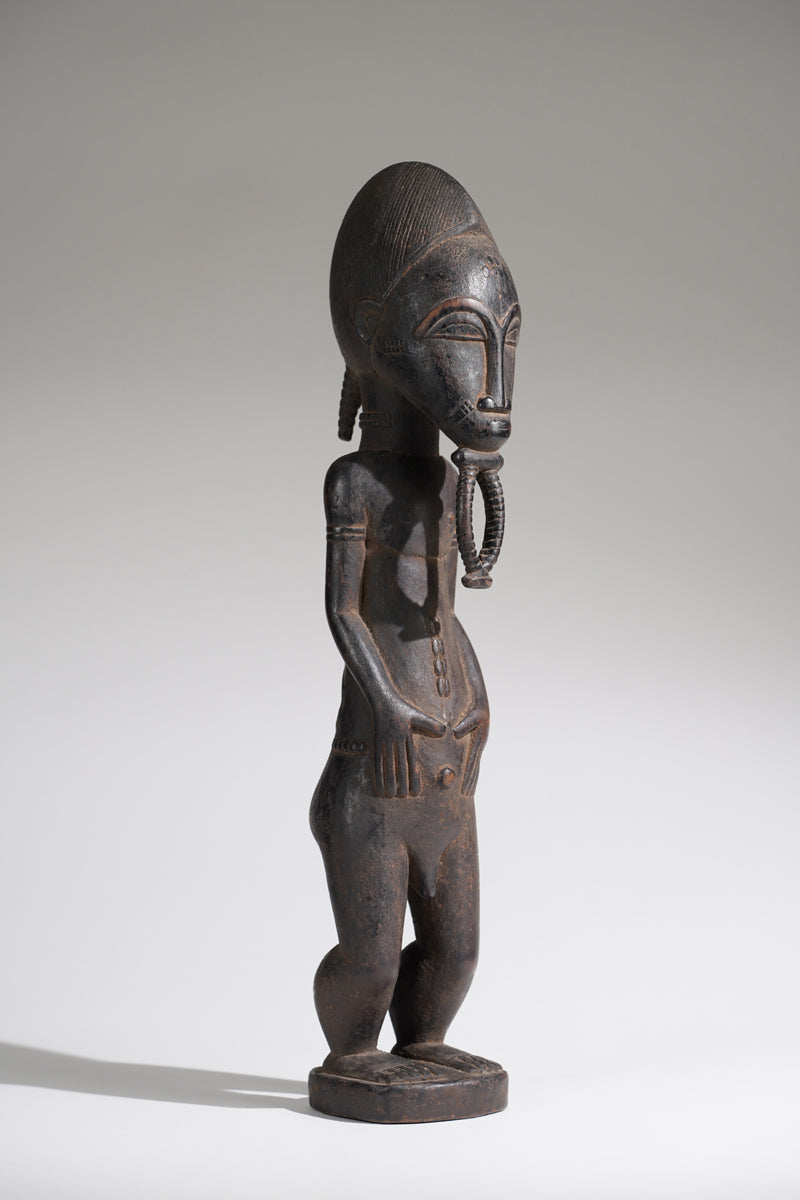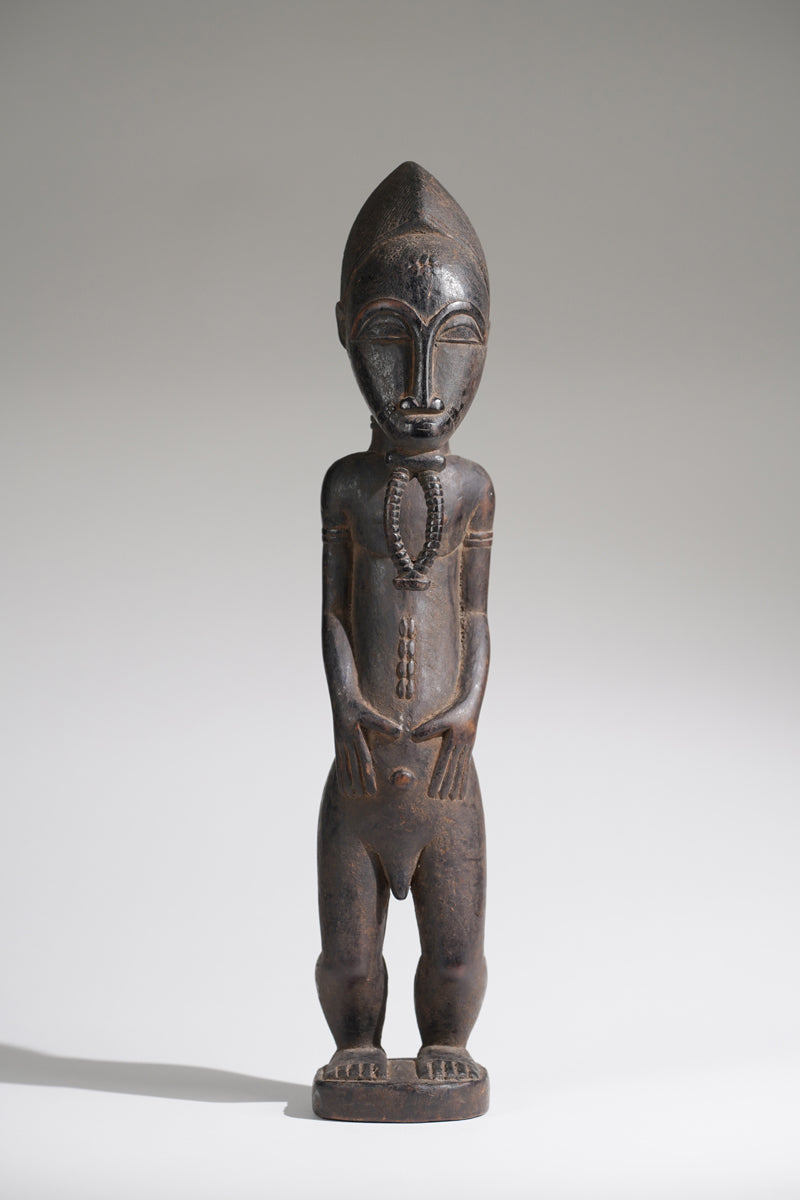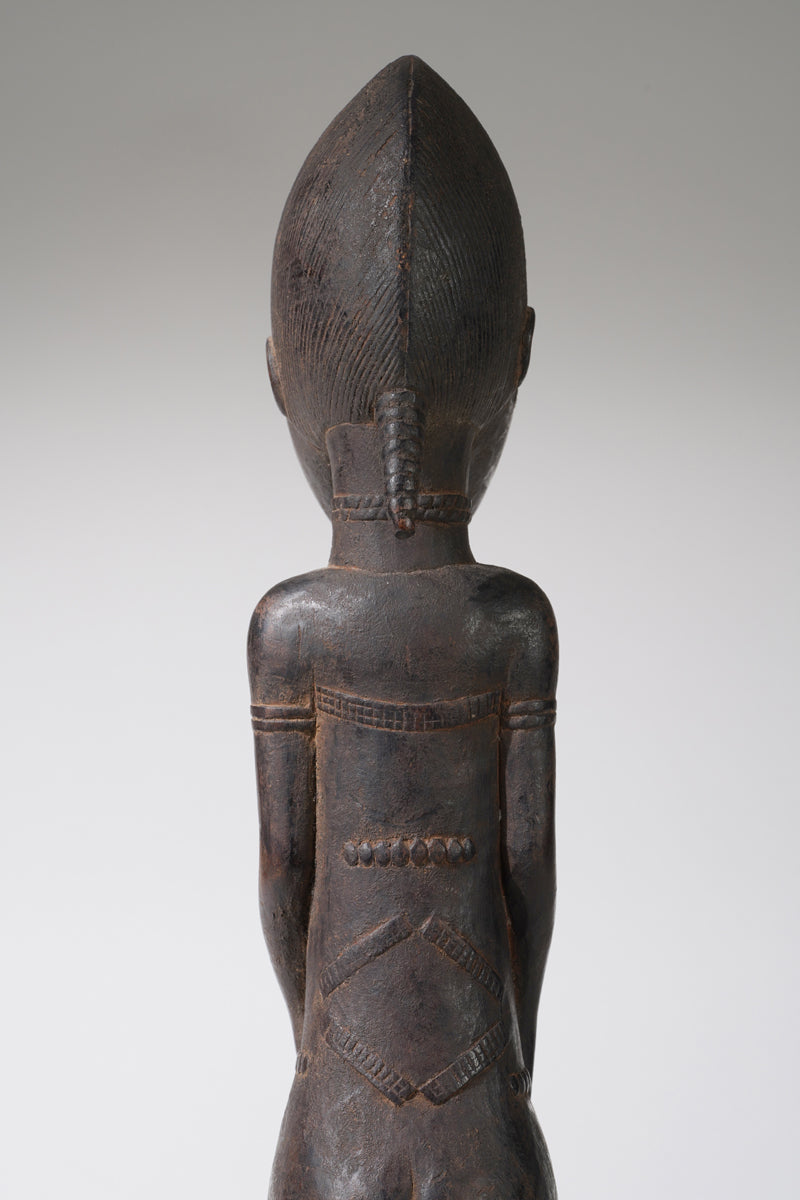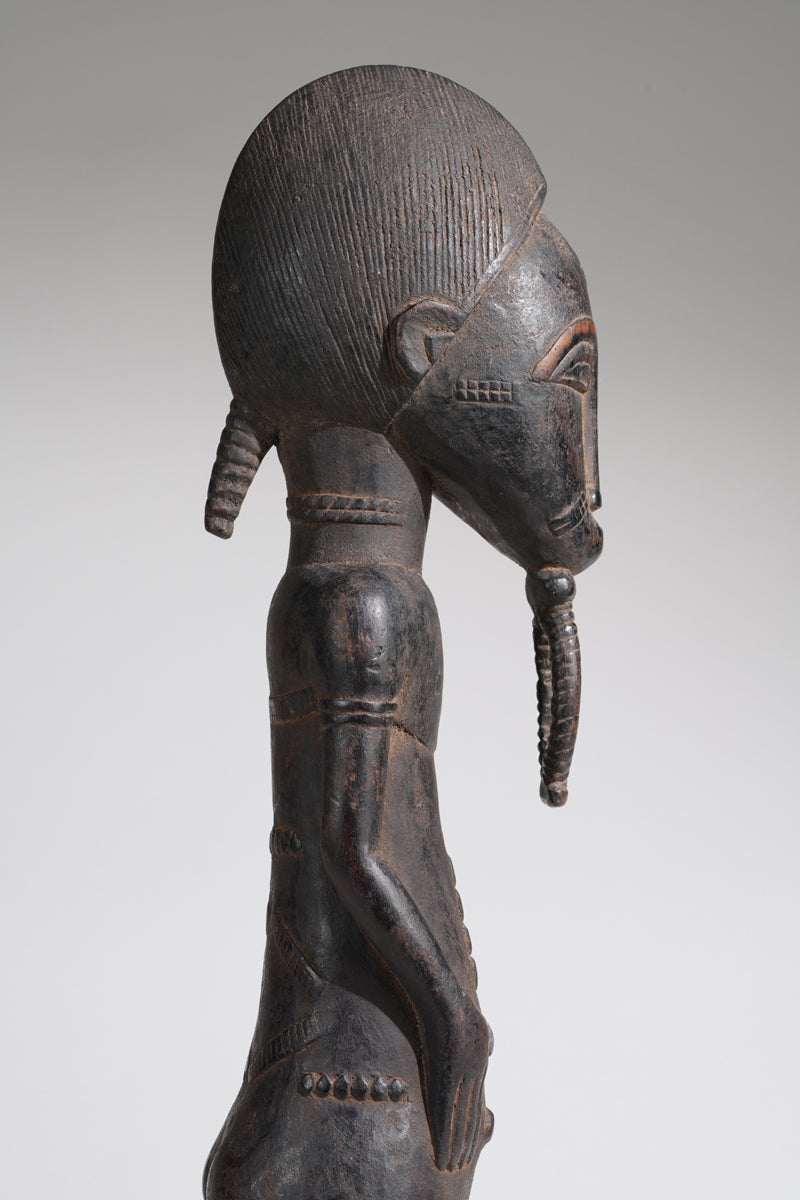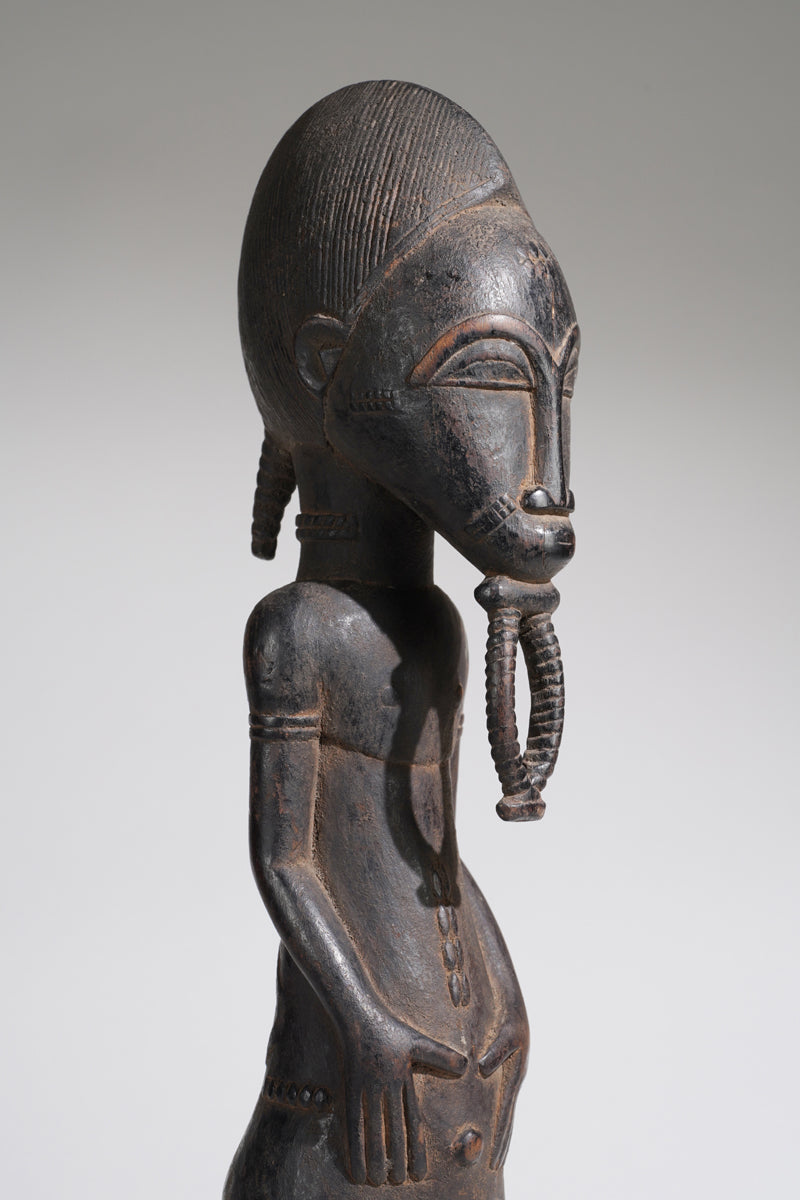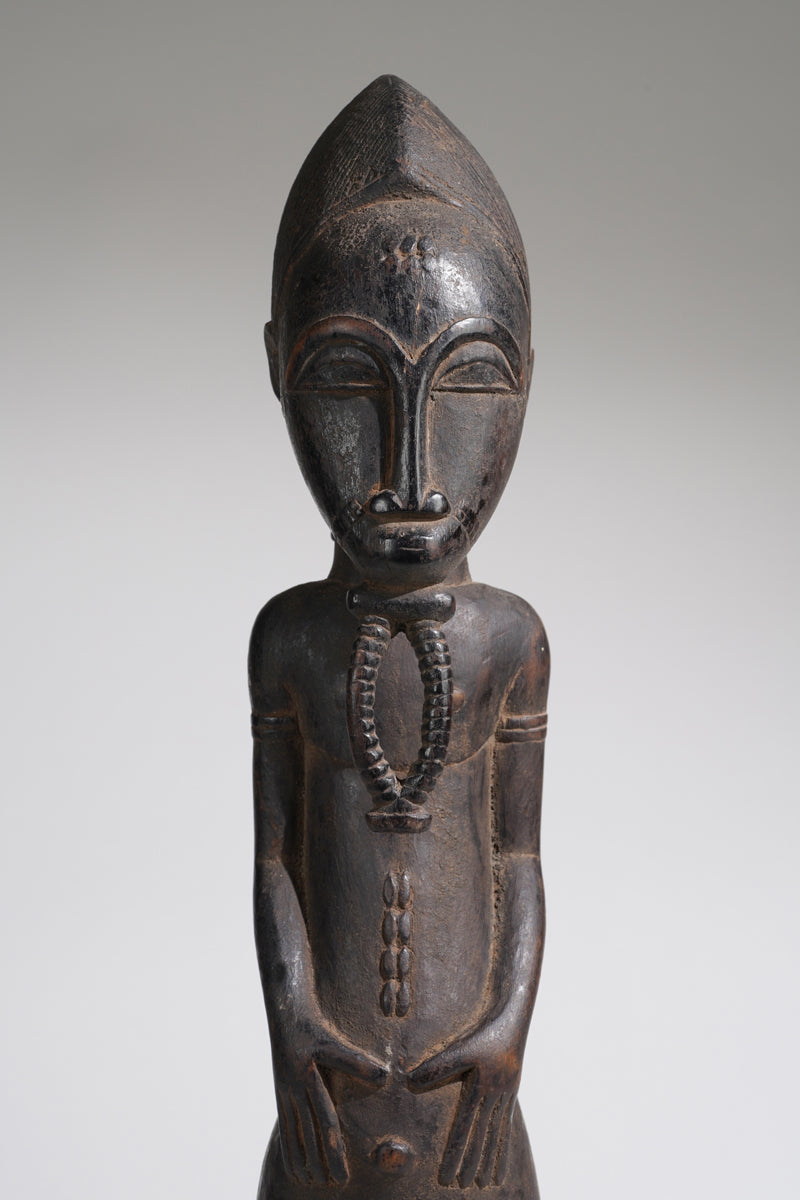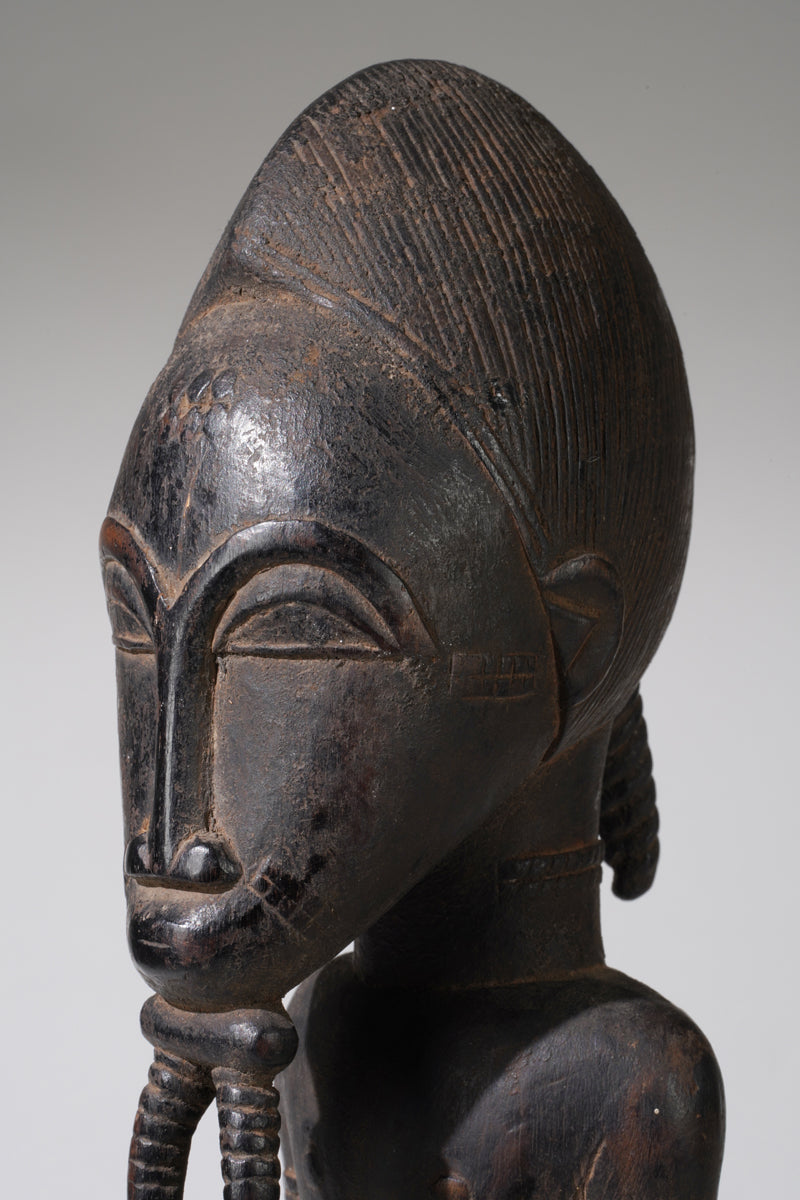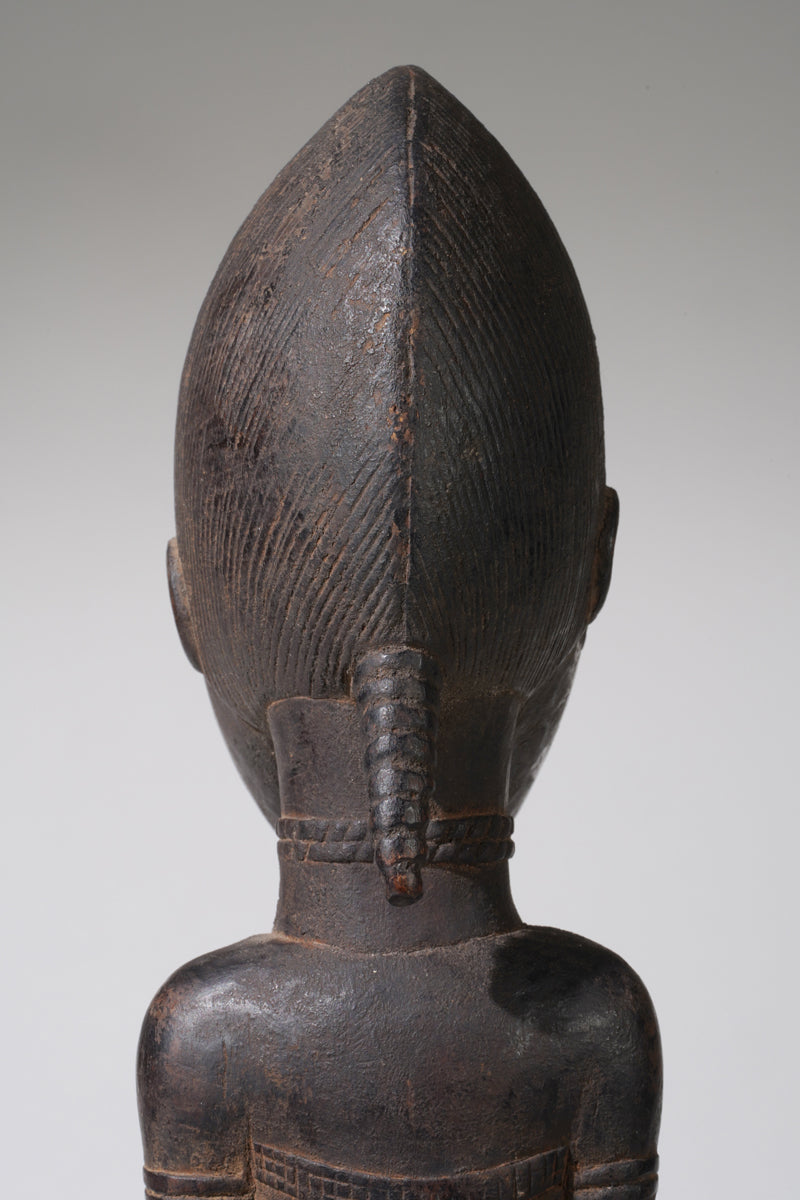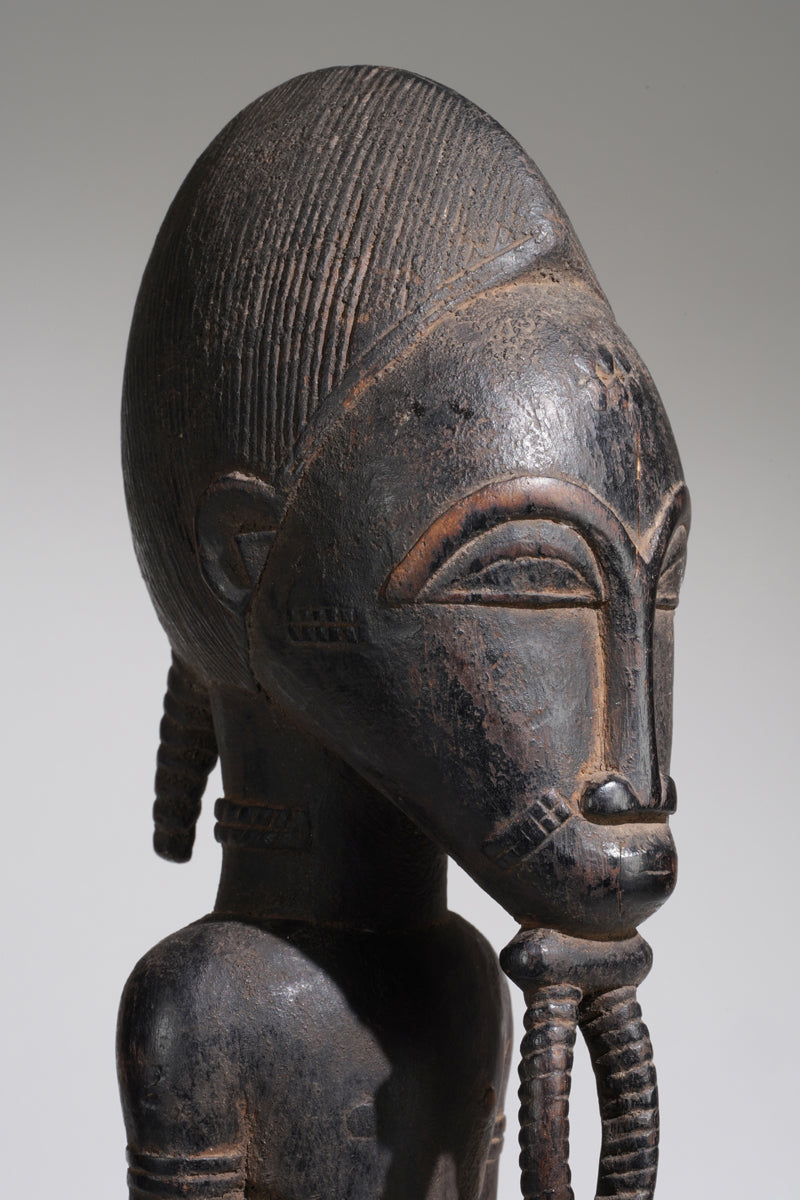wolfgang-jaenicke
A Baule sculpture
A Baule sculpture
Couldn't load pickup availability
A Baule sculpture, Ivory Coast, Bouake region.
Baule male sculptures are primarily associated with spiritual and religious practices. One of their central roles is to embody a spirit spouse (blolo bian), the male counterpart to the female blolo bla. In Baule belief, each person has a spirit partner from the spirit world (blolo) that continues to influence their life. When problems arise—such as infertility, illness, or misfortune—a diviner (komien) may determine that the cause lies with an angry or neglected spirit spouse. A sculpture is then commissioned to represent this spiritual partner and is kept in a private household shrine. It is fed, cared for, and offered libations in a manner similar to ancestral altars.
Beyond the spirit spouse context, male figures can also function as portraits of revered ancestors or embodiments of tutelary spirits. In certain contexts, they may be used in divination, healing rituals, or public ceremonies, particularly among Baule trance diviners. The representation of masculinity in these sculptures reflects Baule ideals of male virtue: dignity, strength, responsibility, and restraint. They are visual affirmations of social and moral order, modeling what a balanced and respected man should embody in Baule society. Baule male sculptures maintain a balance between stylization and realism, exhibiting a high level of technical skill and aesthetic refinement. While there are strong formal similarities between male and female sculptures, subtle distinctions—such as musculature, posture, or the presence of masculine objects like staffs or weapons—indicate gender differentiation.
In comparison to the more abstracted or aggressive forms found in the sculpture of neighboring groups such as the Dan or Guro, Baule art remains notably introspective and harmonious, reflecting the community's cultural preference for order, clarity, and moderation.
“To articulate historians, the most consistent features of Baule art is a kind of peaceful containment. Faces tend to have downcast eyes and figures most often hold their ams against the body. […] Among their abundant art forms, the Baule people continue to place the greatest value on masks and figure sculptures, which remain the only sculptural art still widely used in Baule villages. While there is a difference between the Baule view of their objects and that of Western connoisseurs, there are points of agreement. Aesthetic appreciation is one: Baule artist, and individual owners of objects, certainly sometimes enjoy the beauty of these objects and the skill it took coproduce them. […]
Ornaments above the face are chosen for their beauty and have no iconographic significance” p.141
Lit: Baule: African Art, Western Eyes. Susan M.Vogel 1997.
Height: 46 cm
Weight: 800 g
